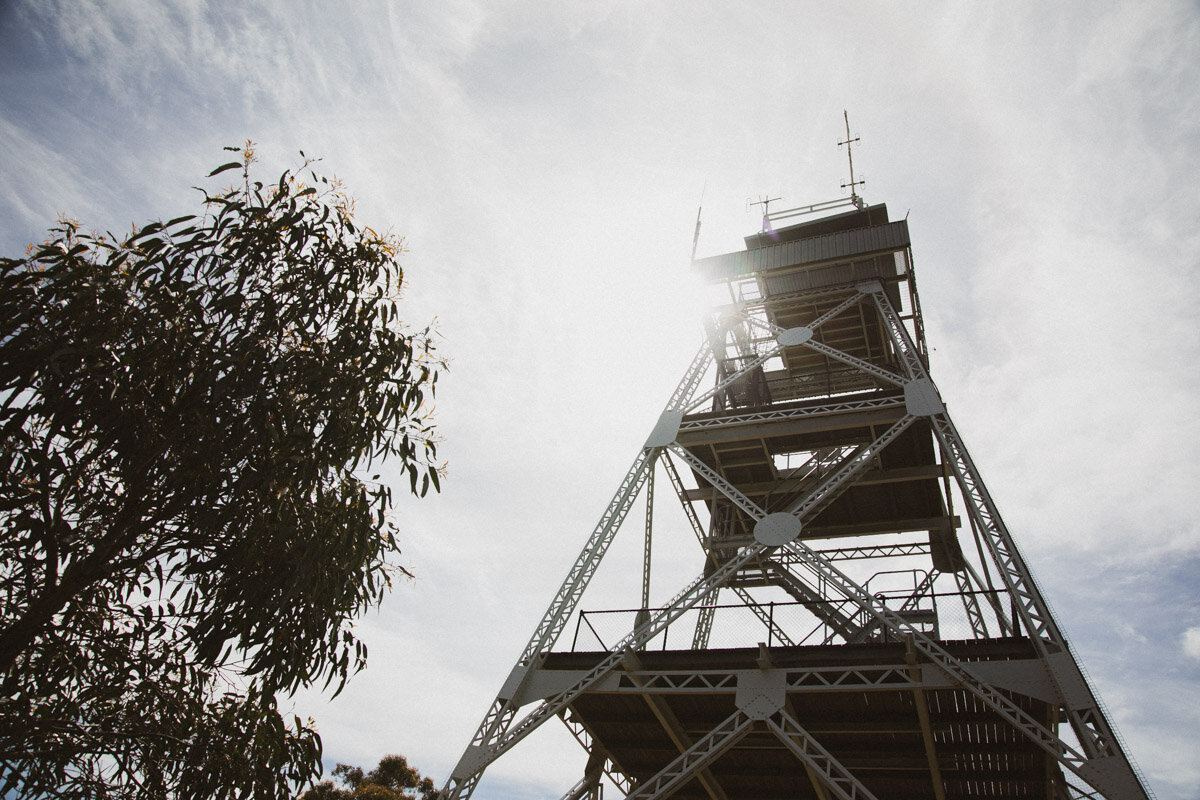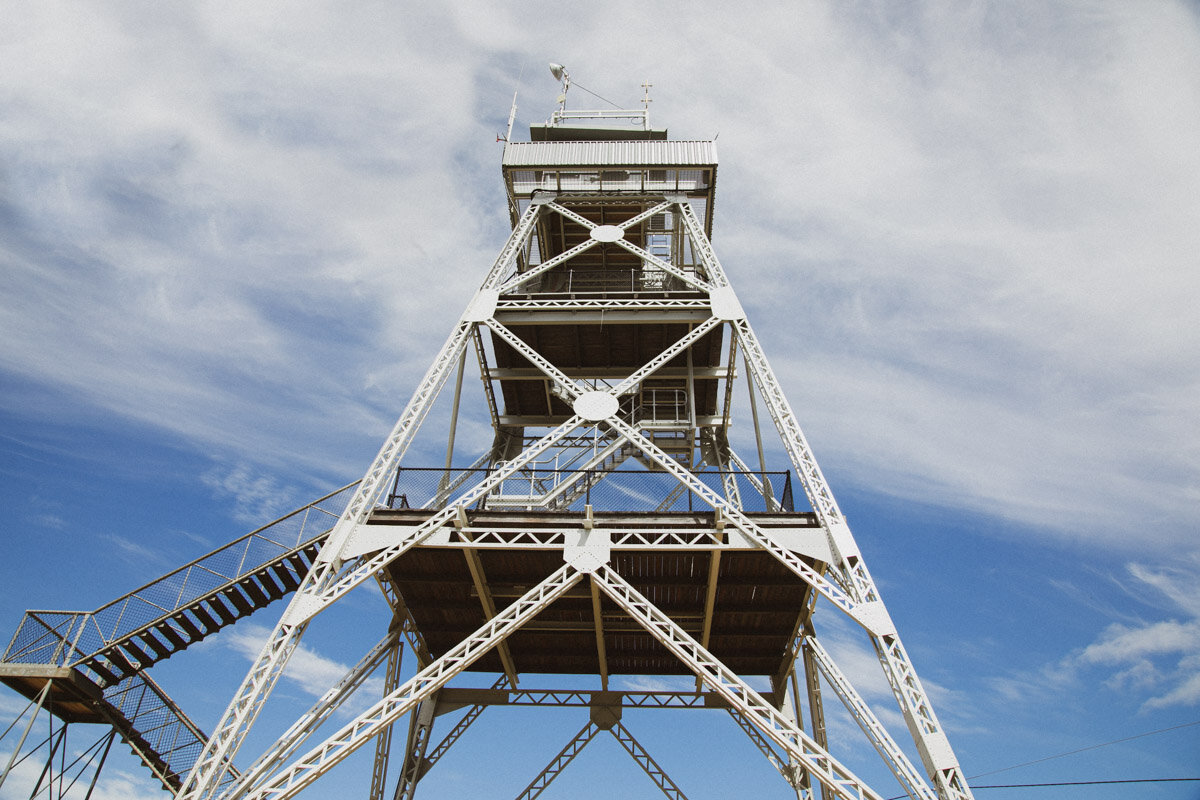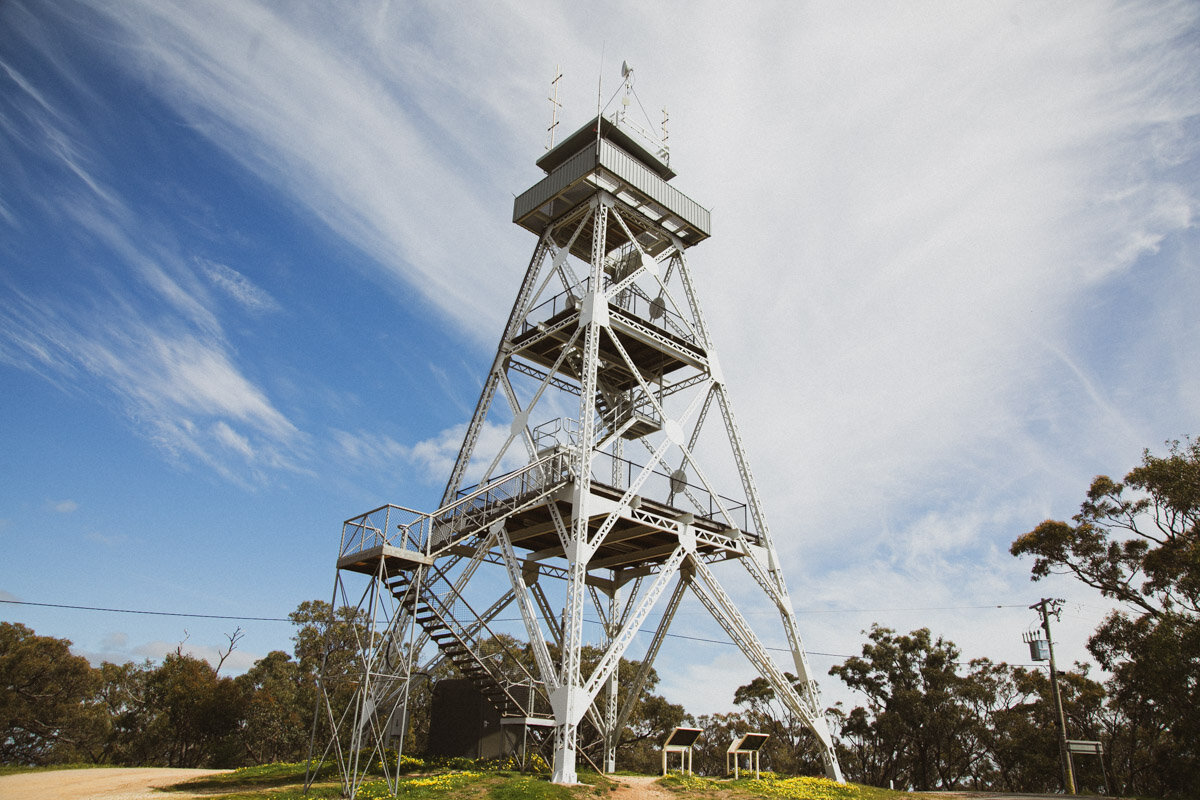Mt Tarrengower Lookout Tower
To get to the top of Mt Tarrangower from the centre of Maldon, drive north along High St, and turn left at Mt Tarrengower Rd.
At the top of the climb you will find ample space to park with tables and benches available for picnics. The view from the ground is impressive but the view from the tower is panoramic and stunning.
The top level of the tower is now used for fire spotting, but the lower two levels are open to the public. From these levels, neighbouring peaks are visible, including Mt Alexander near Harcourt, Mt Korong near Wedderburn, Mt Franklin near Daylesford, Mt Beckwith near Clunes, Pyramid Hill, Mt Buninyong south of Ballarat and Mt Macedon. To the west in the middle distance, Lake Cairn Curran can be seen, a major irrigation and water storage facility on the Loddon River – used in less dry times for fishing, boating and water skiing.
Beyond that can be seen the white mounds of spoil from deep lead mines that worked deposits of alluvial gold in buried riverbeds.
A Short History of the Tower
The tower is one of Maldon’s most distinctive landmarks. Erected in 1923 by the Advance Maldon Association as an attraction to draw visitors to Maldon, the tower was made using the poppet head from the Comet Mine in Bendigo, purchased for £87 and brought to Maldon by train; the legs were then carried up the mountain on a horse-drawn jinker. The tower was officially opened on 26th January 1924.
Mt Tarrengower was the scene of much mining activity with the shafts of the Mt Top Mine and Tarrengower Mine located at the top of the mount itself. Several other workings extended north and south of the peak.
If you decide to take a walk around the bush area, be careful and keep to the tracks as there are many open small shafts and the stone retaining walls and other structures are loosely constructed.
Butts Reserve
As you make the ascent up Mt Tarrangower, you will find the Butts Reserve. It is a clear space to the right and left of the road, with amenities on the left and a stunning rock formation on the right. Also on the right, behind the stand of poplar trees, are the remains of the Maldon Brewery. The existing house was originally the manager’s residence. This area features natural water springs that attracted breweries from as early as 1854. The remaining stone structure, now on private land, may date from the 1860s and was developed by Charles Bryant. By the early 1900s the Maldon Brewery was noted as the largest non-mining industry in Maldon.



